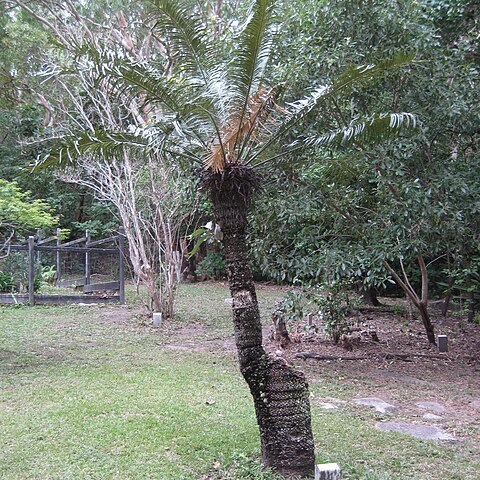An evergreen tree like plant. It grows to 3-5 m high and spreads to 2 m across. The stem is erect and stout and has leaf scars. It rarely has branches. The leaves are 0.5-1.5 m long and palm like with side leaflets along the stalk. The leaflets are deep green and stiff and taper towards the tip. The leaflets are 10-13 cm long and 1 cm wide. The flower is like a cone and brown. The male cones are 30-45 cm long while the female cones are 40 cm long. The female cones produce 4-6 broad oval, orange-red fruit. These are 2-4 cm long.


